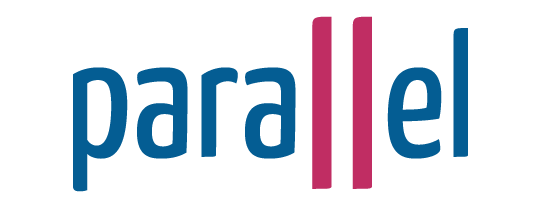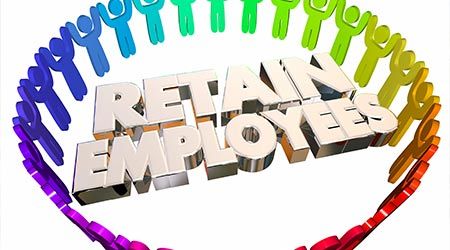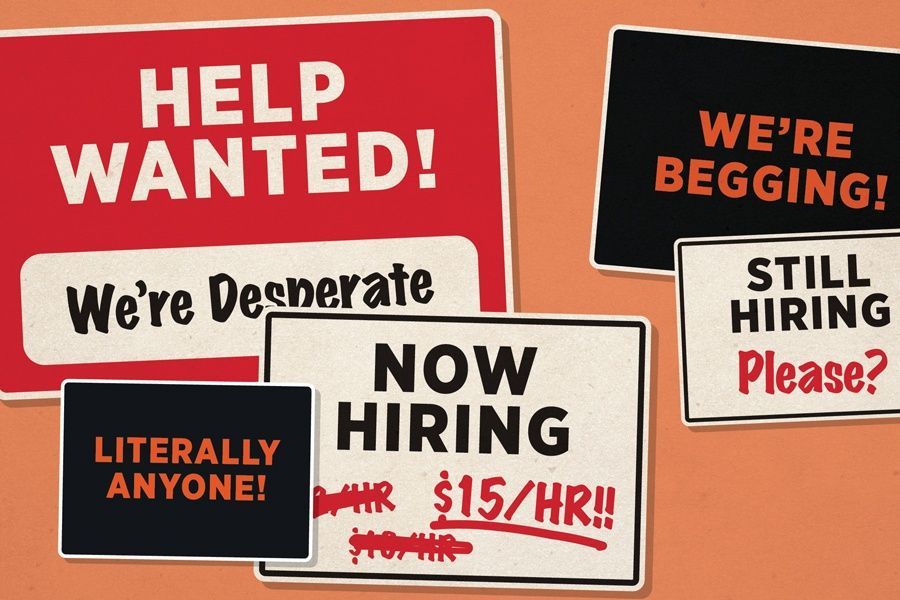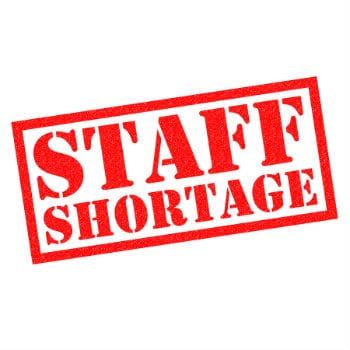If You Can’t Bribe Them to Stay How Can You Keep Employees?

April 2023
How Can You Keep Employees?
For-profits have an advantage as they can increase the cost of their goods or services to generate more income so they can financially bribe their employees to stay.
The public sector typically has pay scales so they can’t magically get more money and they must pay according to a pay scale, often union negotiated.
Nonprofits have two sources of income. Contracts which have a set fee for service and fundraising. They also don’t have the funds to bribe employees to stay, especially at the line staff level.
If the public sector and nonprofits can’t financially bribe employees to stay, what can they do to retain employees?
Our front-line staff in human services is increasingly Gen Y and Gen Z. Studies of these generations tell us what we must do, yet most public entities and nonprofits are stuck in a traditional “business as usually” model that is not working.
More than 19 million US workers—and counting—have quit their jobs since April 2021, a record pace disrupting businesses everywhere. Companies are struggling to address the problem, and many will continue to struggle for one simple reason: they don’t really understand why their employees are leaving in the first place. Rather than take the
time to investigate the true causes of attrition, many companies are jumping to well- intentioned quick fixes that fall flat: for example, they’re bumping up pay or financial perks, like offering “thank you” bonuses without making any effort to strengthen the relational ties people have with their colleagues and their employers. The result? Rather than sensing appreciation, employees sense a transaction. This transactional relationship reminds them that their real needs aren’t being met.
40% of employees stated that they are at least somewhat likely to leave their current job in the next 3–6 months. The top three factors employees cited as reasons for quitting were that they didn’t feel valued by their organizations (54 percent) or their managers/supervisor (52 percent) or because they didn’t feel a sense of belonging at work (51 percent). McKinley Quarterly September 2021
Workers aren’t feeling all that appreciated on the job. Most workers (70%) surveyed recently by Gallup said they hadn’t received recognition or praise for a good job in the past week. Separate research found that one of the top reasons people quit their jobs is because they don’t feel valued. The potential retention fix? Experts told Business Insider that managers should be thanking and recognizing their direct reports’ work at least once a month — and that feedback should be specific and meaningful. Peer-to-peer recognition is also important. One study found that it had twice as much impact on employee wellbeing than manager recognition. LinkedIn 3.30.2023
Gallup found a few results that are disappointingly low:
- Only 22% of employees strongly agree the leadership of their organization has a clear direction for the organization.
- Only 15% of employees strongly agree the leadership of their organization makes them enthusiastic about the future.
- Only 13% of employees strongly agree the leadership of their organization communicates effectively with the rest of the organization.
A study reported in the Harvard Business Review found the most basic form of communication, one on ones, can have a massive impact on the opinion of leadership, and the degree of employee engagement:
"When a manager doesn't meet with employees one-on-one at all...Employees are four times as likely to be disengaged...and are two times as likely to view leadership more unfavorably compared to those who meet with their managers regularly."
Suddenly, it's not so surprising that engagement is so poor. As Gallup's CEO, Jim Clifton, writes, companies need to take their medicine:
"Organizations have nowhere to hide. They have to adapt to the needs of the modern workforce, or they will find themselves struggling to attract and keep great employees and therefore customers."
78% of Gen Y have completed an internship or apprenticeship
84% of Gen Z expect their first employer to provide formal training for their first job
58% of Gen Z consider it acceptable to work evenings or weekends
62% of Gen Z expect to stay in their first job for 3 years or longer
Here are four key attributes that Generation-Z have, which will change how agencies operate and engage:
1. Their high-tech minds don’t trump human needs.
Generation-Z is the first fully digital generation, and yet, they yearn for human interaction at work. In fact, 90% of Generation-Z reports wanting some form of human element woven into their work and team interactions. This means a workplace needs to provide the tech aspect with a twist of human connection.
If you have a Gen-Z employee working remotely, perhaps consider scheduling video chats instead of phone calls.
If you’re managing a Gen-Z employee, offering your time to give them feedback or ask how their project is going will do wonders for their productivity and work output.
This generation (and Gen Y but not Gen X/Millenniums) seeks a collaborative, team-friendly environment and craves positive relationships at work that go beyond online or social media contact.
2. Their desire for work-life balance is deep.
Thirty-eight percent of Gen-Z views work-life balance as a top priority when choosing an employer. This is a dip from the 47% of Millennials who ranked work-life balance as a priority, but still trumps previous generations. In order to ensure you fall within the employers that offer an enticing work-life balance take steps now to reduce workplace burnout from happening.
Here is what employers can also do:
· Send out surveys periodically as a touchpoint to gauge how employees feel at work.
· Set up flex time and offer remote work so that employees feel supported and have a chance to step back when needed.
3.Feedback is a necessity.
Performance reviews and job feedback has historically been something that happens once a year, or if things aren’t going well only. For Generation-Z, this won't fly, as 60% of Generation-Z’ers want multiple check-ins from their managers weekly, if not daily. This can become a major burden on managers if they don’t prepare time and processes in advance to be supportive.
Gen-Z does not only value frequency with feedback, but they also value measurability. This means delivering feedback to Generation-Z in a way that’s trackable. Address specific and tangible points that are as close to their behavior or results as possible in order to help them learn quickly. Explore using a technology portal that can track, or even trend, their performance.
If daily contact is needed, It is possible that sending a short email or message that contains a single emoji or phrase is enough to help them feel connected and on track.
4.They have a good mindset about failure and feedback.
Failure is so often viewed as just that...failure. When a project doesn’t work or a goal isn’t met for most of us it means time to pack up and retreat.
This is not the case for Generation-Z. In their eyes, failure is an opportunity to grow and learn. According to a recent report, 80% of Generation-Z saw failure as something to embrace on their way to more innovation and learning within a project. They view it as a tool to learn and grow, not feel defeated. When you have a better perspective of individuals. it becomes more possible to create an environment in which they can thrive.
From the world of business and industry there have been numerous studies done of what happens when you provide your employees with coaching. The results are consistently the same. Over 70% of employees who receive coaching saw an increase in work performance, improved work relationships, improved communications skills, and 80% reported more self-confidence. (Benefits of Coaching, March 28, 2013)
I could continue for pages reporting on results of recent studies of workforce retention of Gen Y and Gen Z but they all say to teach supervisors at all levels of your organization the following:
1. How to be a coach
2. How to give praise on a consistent basis
3. How to build and maintain a positive working relationship with the staff they supervise
4. How to address problems without being punitive
5. How to help the staff they supervise learn to solve their own problems with help through solution focused problem solving and use of the 3Rs.
6. How to create job descriptions that honestly describe what the job is
7. How to move from evaluating to performance review
These are the essential skills taught in Supervision for Success. It is a supervision practice model that everyone who supervises can use and that the agency should require them to use.
If you can’t bribe line staff to stay, then it’s time to teach your supervisors/managers/leaders at all levels how they can better retain staff while improving results through how they work with staff. It requires all supervisors/managers/leaders use the same supervision practice model, so you treat all employees equitably.
It is up to the leaders to decide if we can’t bribe them then we must work with them in a different way that is based on the workforce studies and has been proven to retain staff and improve results.
Are you willing to invest in training all supervisors/managers/leaders in your agency in a supervision practice model that is proven to retain staff and improve results?
=============================================================
LEADING FROM OUTSIDE THE BOX is a monthly newsletter for human services leaders.
Its purpose is to challenge your thinking and help you improve organizational and outcome performance.
To receive your copy free, simply email Jeff Bormaster and ask to be added to the mailing list. Feel free to share these newsletters with other human services leaders, simply include the contact information.
You can read previous issues of Leading Outside the Box at www.jeffbormasterconsulting.com/topics











